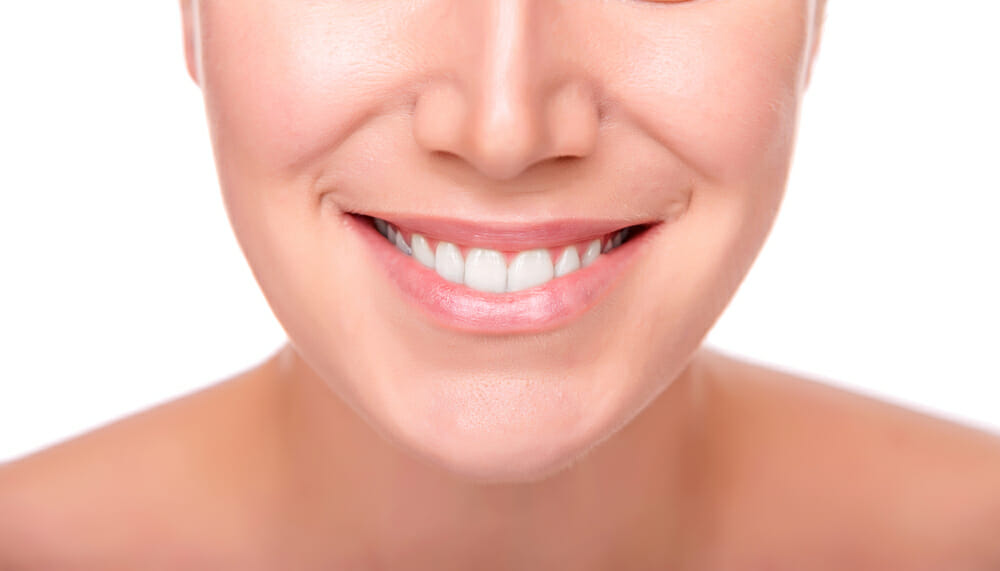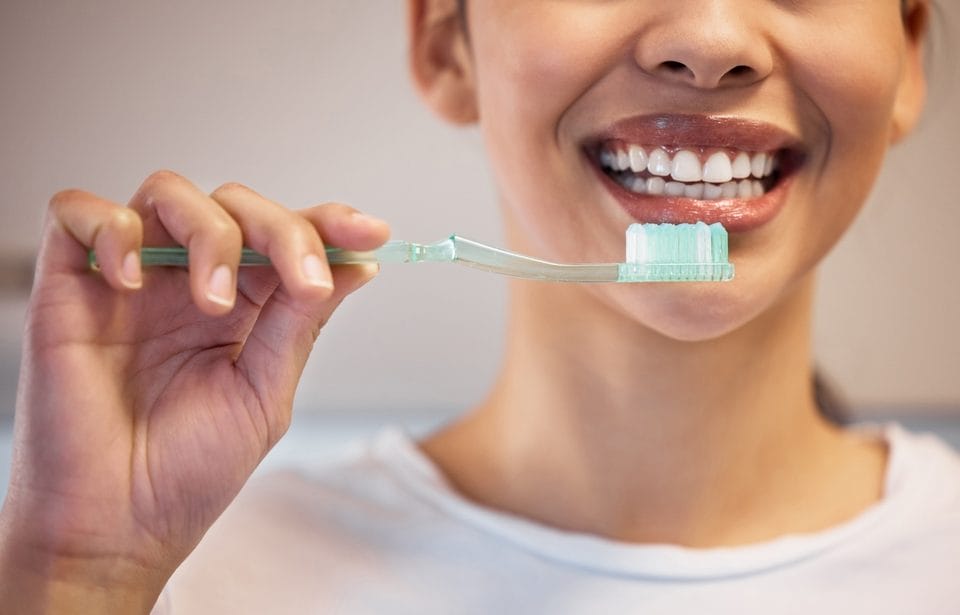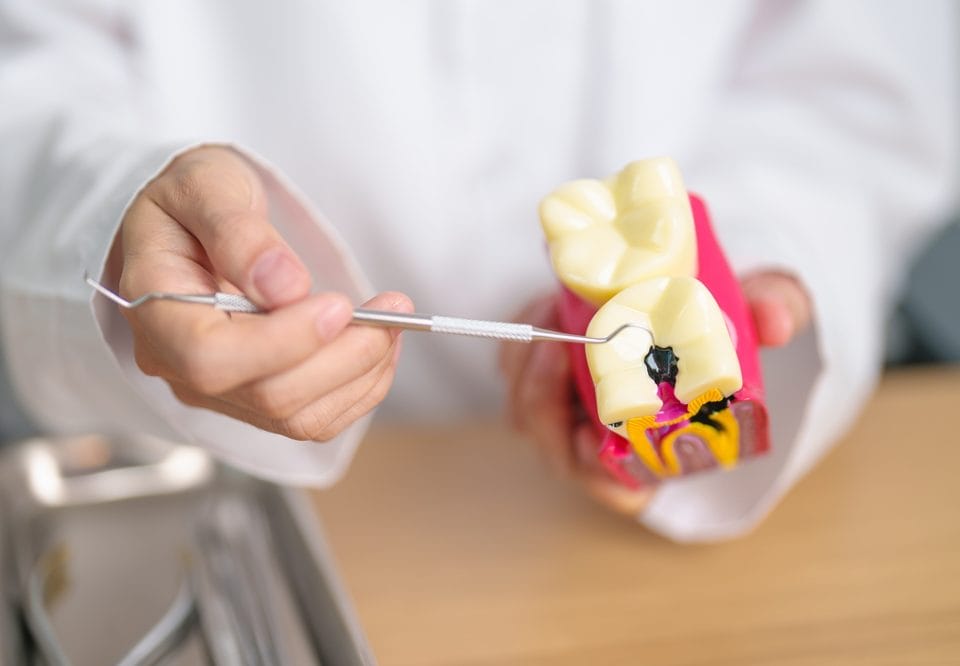
Having a dental emergency? Call us!
614-882-1135
We understand that dental emergencies can happen at any time. If you're in need of urgent care, give us a call, and we'll do everything we can to assist you when it matters most.
Patient Testimonials
Discover Better Dentistry
Become a part of the
Westerville Dental family!
We're accepting new patients. Our dental team prides itself on delivering a truly efficient and enjoyable experience while you’re with us.

Have you ever examined your teeth closely and noticed that they are more yellow near the gum line than at the tips? That yellow color might be dental plaque.
Yellowing of teeth near the gum line might also be an early sign that you are at risk for tooth decay, gum disease, and other oral health problems.
Causes of Yellow Teeth near the Gum Line
Many things can discolor your teeth. Coffee, tea, and certain other beverages can stain your teeth, for example, as can using tobacco or taking specific medications. Trauma can discolor teeth.
Aging can also cause yellow teeth. Over time, the protective layer of enamel on the surface of each tooth can thin to reveal the layer of dentin below, which has a yellow color. Throughout the years, dental plaque can accumulate on the enamel, and especially at the gum line.
Dental Plaque and Tartar can Turn Your Teeth Yellow at the Gum Line
Dental plaque is a soft and sticky film that regularly builds up on your teeth. Sometimes a thin layer of plaque appears clear, but turns yellow as it accumulates.
Plaque develops when bacteria in the mouth combine with food byproducts and proteins. This sticky film adheres to the surface of tooth enamel; it can also get under the gum line and stick to fillings or other dental work. Brushing and flossing work well to remove plaque, but only if you brush and floss properly and regularly – doing a poor job of brushing or flossing, or skipping it entirely, allows plaque to accumulate on your teeth and gums.
The bacteria that live in plaque feeds on the sugars and starches in the food you eat. As the bacteria feed, they produce an acid that is strong enough to damage tooth enamel. Left in place, the plaque and acid can lead to tooth decay and even the loss of a tooth.
The sticky nature of plaque traps minerals from your saliva. If left on your teeth for 24 to 72 hours, the minerals accumulate and cause the plaque to harden into tartar. Accumulation of the minerals gives tartar its yellow color. Tartar accumulation is very common. In fact, 68 percent of adults in the United States have tartar.
Like plaque, tartar holds bacteria and the acids they produce onto the surface of your teeth. Unlike plaque, however, tartar is very difficult to remove. Tartar tends to accumulate at the gum line on the front and back surfaces of teeth. When it forms above the gum line, tartar can damage tooth enamel and lead to tooth decay, also known as cavities. Tartar can accumulate below the gum line too, which can irritate sensitive gum tissue and lead to gum disease.
Like the yellowing of teeth, gum disease is a progressive condition that worsens over time if left unaddressed. Gingivitis is the mildest form of gum disease. Also like yellowing teeth, you can reverse gingivitis by proper brushing and flossing along, using an antiseptic mouthwash, and routine dental cleanings. Left untreated, gingivitis can progress to periodontitis, which is the advanced form of gum disease. In periodontitis, the irritation from the tartar can cause the formation of pockets between the teeth and gums; yellow tartar can develop inside these pockets and damage the bones and tissues that hold your teeth in place.
Fortunately, tartar is easy to recognize as it accumulates near your gum line. The yellow color near your gum line is a telltale sign that you have tartar buildup. Tartar also has a rough texture that feels quite different from the smooth surface of tooth enamel. Other signs of tartar accumulation include irritated and inflamed gums, and gums that bleed easily when you brush.
How can I prevent my teeth from getting yellow at the gum line?
The best way to prevent yellowing is to remove plaque before it can turn into tartar. You can remove plaque by:
- Brushing twice a day and flossing once daily
- Using a tartar control toothpaste
- Rinsing your mouth with an antiseptic mouthwash
- Avoiding sugary or starchy food that feed bacteria
- Not smoking, as those who smoke have a higher risk of tartar buildup
How can I get rid of that yellow color near my gum line?
The treatment for yellow teeth depends largely on the underlying cause. If your teeth are an even shade of yellow from drinking coffee or tea, simply whitening your teeth may be enough to restore the natural color of your pearly whites. However, if your teeth are yellow near your gum line because of tartar buildup, only treatment from a dentist can help.
Tartar creates a tight bond with teeth. Dentists remove tartar with a procedure known as scaling, in which they use special tools to scrape the tartar away without damaging the tooth enamel. Removing the tartar addresses discoloration and reduces the risk for gum disease and tooth loss.
For more information about tooth colors and why your teeth are more yellow near your gum line, consult with your dentist. Our dental health professionals at Westerville Dental Associates can help you determine the cause of tooth discoloration, and help you develop a plan to address it.


 Meet Dr. Stickel
Meet Dr. Stickel Meet Dr. Zody
Meet Dr. Zody Meet Dr. Choi
Meet Dr. Choi Meet Dr. Son
Meet Dr. Son



